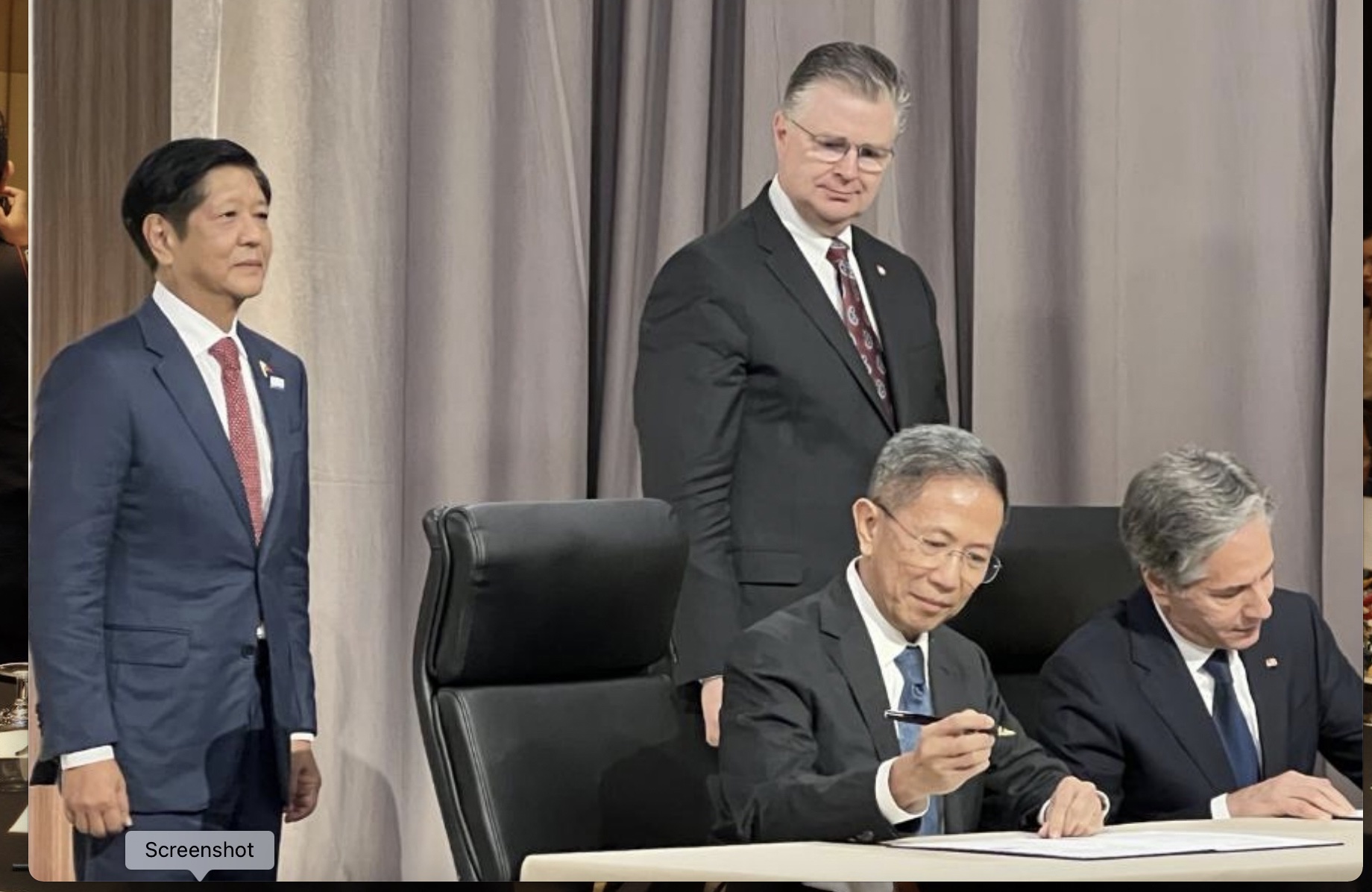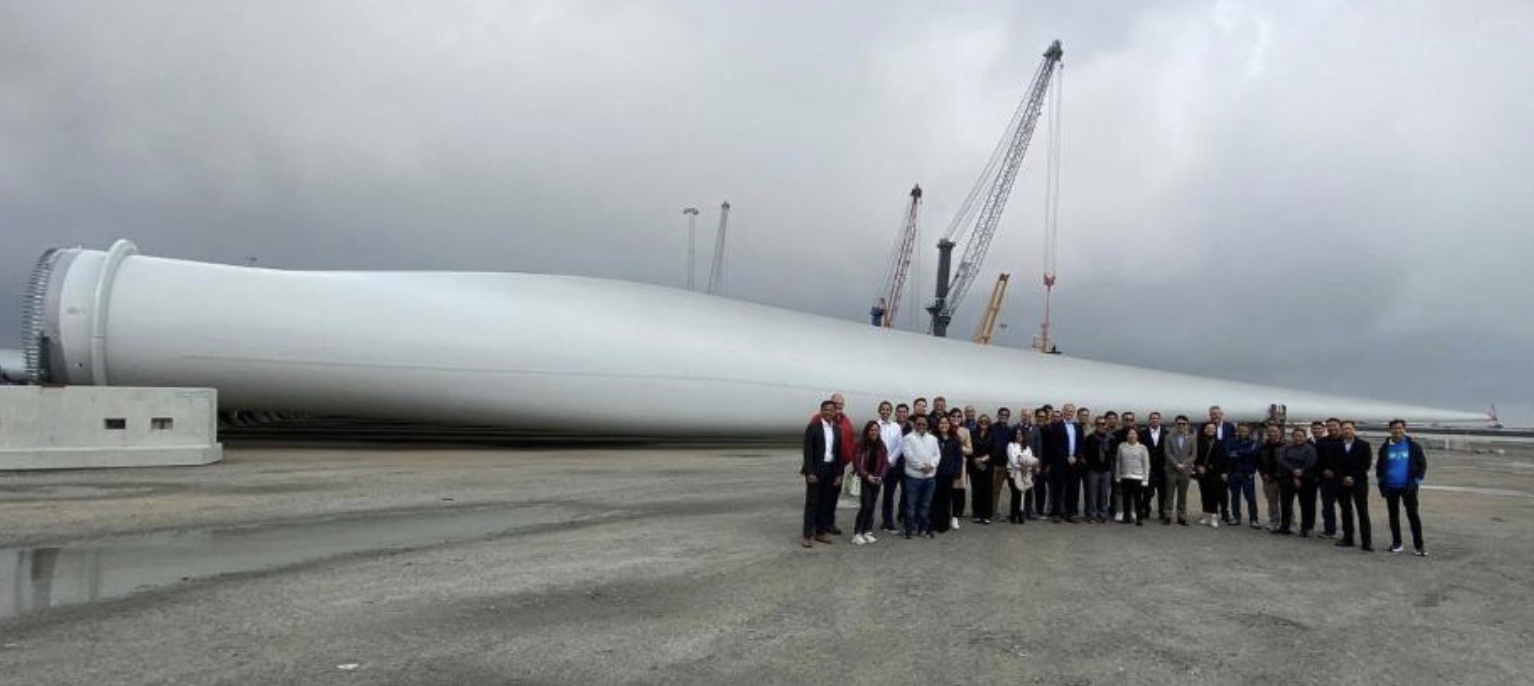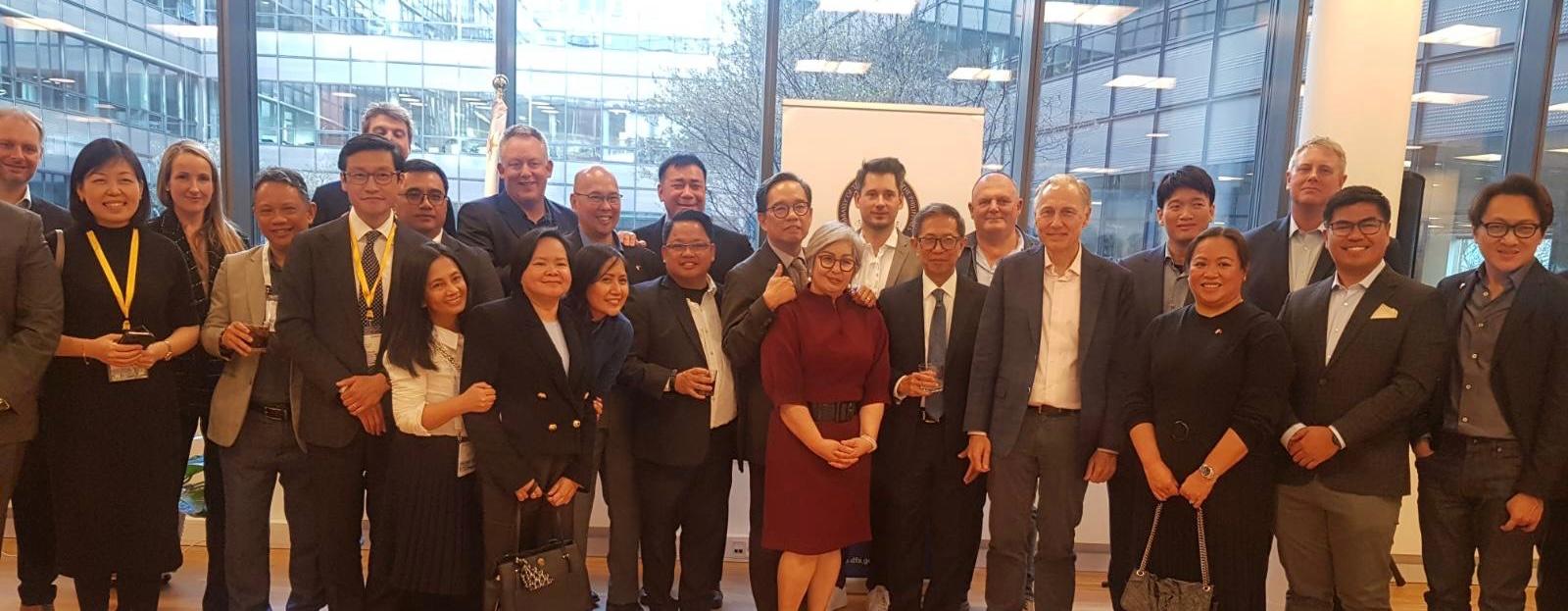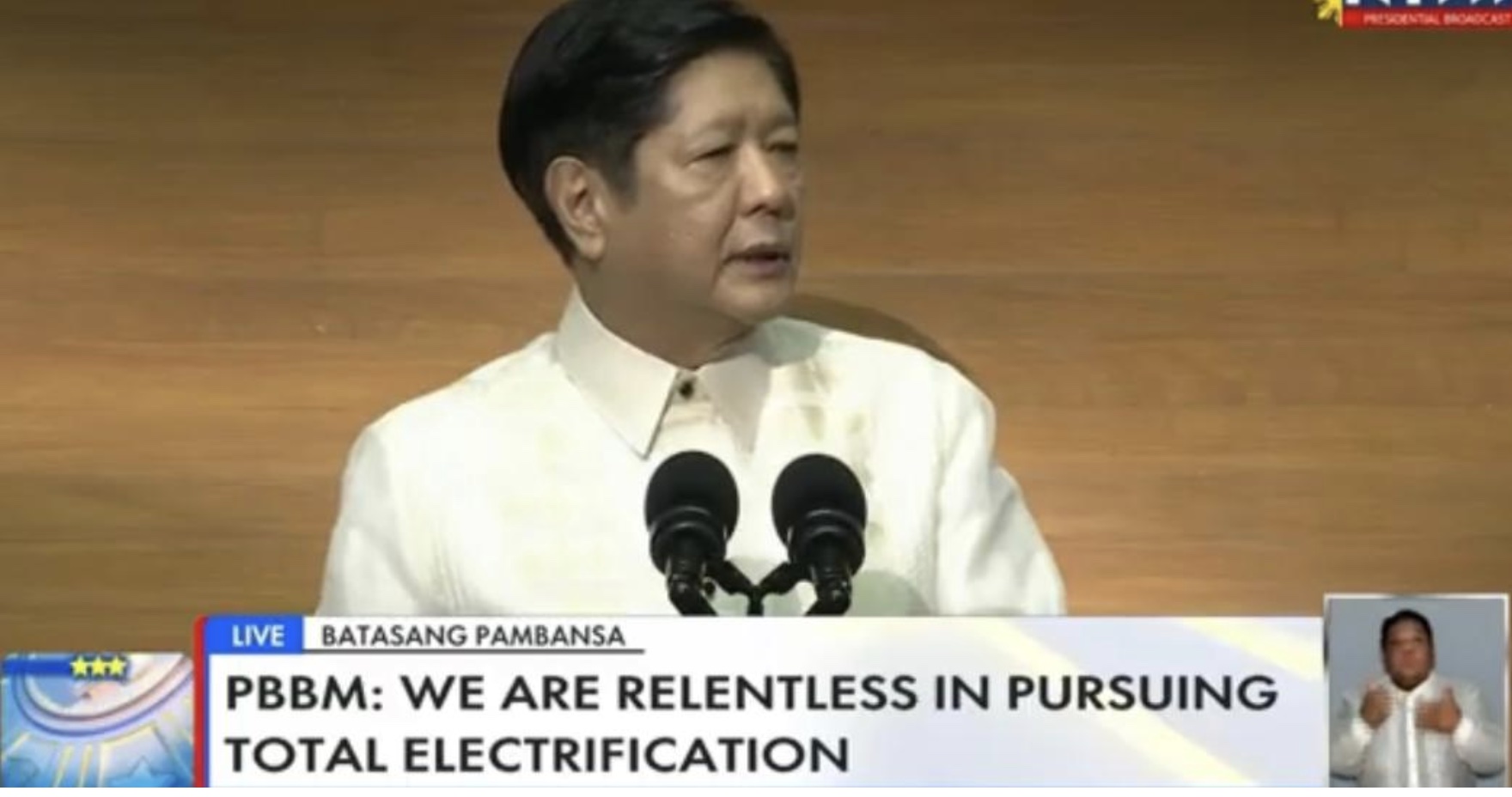Rewiring 'power play'… and rewriting PH energy policies with 'green ink'
ENERGY MONTH SPECIAL REPORT
At A Glance
- <img src="https://images.mb.com.ph/production/mb-mkt-neo-prod-1-uploads-2/media/PBBM_with_RPML_66c3be9dc5/PBBM_with_RPML_66c3be9dc5.jpg" alt="PBBM with RPML.jpg">
- President Marcos with his energy czar choice
“Energy security’ is a crescendo that has not come yet for the Philippines despite the years of restructuring and rumbling changes in the power industry – and it was also hardly a stuff for reasoned policy analysis through the years.
That then places the country in a catchup mode - not just on much needed power capacity additions – but more so on warranted transformative shifts in the energy supply chain; primarily decarbonization ushered in by massive-scale investments in renewables and other clean technologies.
The major responsibility of rewriting the rulebook now lies with the Marcos administration – and with the perilous impact of climate change, this has to be inscribed in bold strokes of green ink.
Suffice it to say that central in the policy-making affair of the government is how much it is willing to stake in the buildout of reliable energy infrastructure within the energy trilemma frame – so these facilities could simultaneously address the more pressing challenges of global warming, health and safety concerns while also ensuring ‘social payback’ in communities they are operating in.
Turning ‘crisis’ into opportunity
President Marcos’ choice of his energy czar had been welcomed with open arms and cheers in various segments in the industry – but returning Energy Secretary Raphael “Popo” Lotilla knew it too well that his job won’t be easy – because there’s already a threatening crisis that he will need to address the moment he would assume his post.
The ominous forecasts then were: the summer months of the initial year of the Marcos administration would be marred with rotational brownouts or blackouts – a predicament that will hurt not just the country’s economic prospects but even the trust bestowed by the Filipino people into the new government leadership.
While it wasn’t a plain sailing decision on his part, Lotilla said what motivated him the most to find his way back into the energy juggernaut is to “fulfill an unfinished business” – because he also served as Energy Secretary during the initial years of the power industry’s restructuring, but a lot had not been accomplished yet on the visions and goals that were set for the entire sector under the Electric Power Industry Reform Act – not just on the issue of energy supply, but most importantly, the people’s long term wish for affordable electricity rates.
“Everybody knew that regardless who will be the President; and regardless who will have the energy portfolio will be facing a tremendous challenge. It was a difficult decision because of the enormity of the problem… and you see energy can make or break the administration at the start – and that’s the kind of crisis that President Marcos had,” he conveyed.
Lotilla forthrightly admitted it was his conscience that nudged him – because knowing that he has the capacity to help solve the niggling problems in the energy sector, it will be a rash act to shirk from that paramount responsibility being offered to him.
Thus, even before the ink on his appointment paper dried up, the energy chief professed that he already prepared himself for “sleepless nights’ given the Herculean task lodged onto his lap.

Energy Secretary Raphael P.M. Lotilla is hopeful about the country’s energy future.
“There was absolute necessity for doing everything at the same time to make the new government surmount that particular stage – we didn’t know how long it would take, but nevertheless, the challenges needed to be addressed. You have to look forward to sleepless nights if that’s the way that we can help our people and making sure that the programs envisioned by the President, are in fact, given a chance to succeed,” he stressed.
The energy chief emphasized “if there is anything that I can do in order to make sure that we get over that most difficult that we’re seeing at the time, I should not shirk from doing my best to help out -- because when things would worsen, the people are going to say, that’s your fault! So, there is that feeling of guilt, therefore, given the opportunity to help the country and the President, I should not shirk from the responsibility.”
Upon his return into the energy battleground, Lotilla narrated that he had two-hour exhaustive discussion with the President on charting the way forward for the energy sector – crisis era and beyond.

Secretary Lotilla signed the 123 Agreement for Nuclear with US Secretary of State Antony Blinken on the sidelines of the APEC Leaders' Summit last November; and that historic event was witnessed by President Marcos. (Photo credit: DOE)
“We were discussing the entirety of the energy sector. The President was clear – and also the fact that we were facing huge problems, he wanted to have solutions. And we need to plan not just short-term but long-term. I don’t also want to leave a problem to succeeding administrations and then of course, we have the immediate problems to resolve,” he enthused.
Major leap for renewables
More than a decade ago, there was already persistent plea – particularly by foreign companies in the renewable energy (RE) sector for ownership restrictions to be eased, but that had not been heeded for a long time. Providentially under the Marcos administration, the new DOE leadership – just barely months into office - was able to secure a favorable legal opinion from the Department of Justice (DOJ) and that finally set the legal groundwork on freeing up 100-percent equity ownership to foreign investors – primarily for solar and wind farm projects.
The DOJ, in particular, prescribed that the implementing rules and regulations (IRR) of the Renewable Energy Act must be amended to conform to the opinion – and that too, was expeditiously accomplished by the DOE last year.
Moving forward, it is now manifest that capital influx in the RE sector is really the ‘game in town’ when it comes to investments in the energy sector – be it for solar, wind farms (both onshore and offshore), even prospective development rebound in the geothermal sector; as well as in other technologies like hydro, biomass and waste-to-energy facilities.
As a matter of fact, even the investment-pledges being brought home by the President in his official foreign trips and state visits are often dominated by interests in renewable energy projects.
That draw of strong interest in the RE sector upended the DOE’s policy direction on accelerating RE installations in the country – thus, increasing the share of RE in the energy mix by 35% in 2030; and 50% by 2040.

Secretary Lotilla led a Philippine delegation to Denmark in April to study and have a closer look at infrastructure development frames and policy underpinnings to entice investments in the offshore wind sector of the Philippines. Photo was taken at Denmmark’s Port of Esbjerg, the biggest port in Europe that has been supporting wind investments all over the world. (Photo credit: The Royal Danish Embassy in Manila).
Concretizing that paradigm shift, however, presents new mosaic of defining challenges that the country’s electricity system would have to overcome – including technological hurdles on grid integration of mammoth capacities from renewables.
Viable solution to that is still not within reach, but the DOE chief is relentless in scouring for fixes that could provide major facelift and expansion to the antiquated grid infrastructure – that way, the investment-dollars being lined up in the country would not be squandered.
“The grid connections are important. We need to complete, upgrade the transmission system; and now, that was highlighted even more by renewable energy because of its variable nature, so we will be addressing that,” Lotilla underscored.
In parallel, the DOE is gearing up for the development of support infrastructure for RE projects --- i.e. port facilities for offshore wind. Equally important, Lotilla is not also forgetting the human element – and along with like-minded collaborative partners like Denmark Ambassador to the Philippines Franz Michael-Mellbin and the relevant industry players, they have been championing efforts on the upskilling and right-skilling of Filipino workers so they can be legitimately prepared for the ‘green jobs’ awaiting them in the RE sector.
Unequivocally, Lotilla is pushing for policy changes and energy development roadmap that will revolutionize industry hierarchies – especially in areas where innovations had been stymied for a long time – including warranted technology coupling of renewables with energy storage; electric mobility and further down the road could be nuclear new builds (i.e. small modular reactors or SMR; and micro modular reactors or MMR); hydrogen, ammonia and even the rollout of carbon capture and storage (CCS) and other technologies that may still surprise energy markets in the decades ahead.
Onward to 2030 and beyond, the energy chief firmly believes that the country can lay the foundation to its energy security agenda and independence – primarily with renewables aided by more advanced technological solutions, smart grids as well as improving energy efficiency through the entire supply chain.

The Philippine delegation for the offshore wind study in Denmark led by Secretary Lotilla was hosted by Philippine Ambassador to Denmark Leo Herrera-Lim.
A congruent aspiration that Lotilla shares with all Filipino ratepayers also is: for the day to come that we will no longer complain of surging power bills every time we flip switches in our homes; and for the economy to finally attract big-ticket investments in manufacturing because lower-priced electricity’ already thrived as the country’s lifeblood toward its path to industrialization.
“Price is a significant concern for our people… so, the concern is how do we get now to a point where we’re going to benefit our people – not only in terms of greenhouse gas reduction, in terms of security of supply which is indigenous; but the price,” he enthused.
Socio-economic chasm of electricity access deprivation
Power must be synonymous with sustainability, resilience and progress – but this is a basic need that many of the marginalized populations are still being morally denied of.
The Philippines is in no case different – this archipelagic country has millions of households still not seeing the light of day when it comes to getting electricity service and these are typically located in marginal areas considered ‘uneconomically viable” – fundamentally the barangays or communities that are in a ‘no-win situation’ to be physically wired and get connected to a power grid – classic examples are off-grid and far-flung areas.
When the economics aren’t compelling, the ‘business-as-usual scenario’ of providing electricity scares off traditional energy providers, despite the government’s rallying petition that these areas too need paramount attention.
That’s the life chronicles of many Filipinos which prompted President Marcos to blazon in his State of the Nation Address (SONA) this year that: 100% household electrification must be among the key goals that his administration will have to accomplish.
“We will spare no effort to achieve full household electrification by the end of my term. 100% is within our reach,” the President declared.

President Marcos declaring his mandate for 100% household electrification in his State of the Nation Address (SONA) last July.
Latching on to that pronouncement from the President, Lotilla rallied the relevant attached agencies of the DOE – in particular the National Electrification Administration (NEA) and state-run National Power Corporation (NPC), to weave plans and craft strategies as well as advance the initiatives in realizing that mandate.
But the energy chief is aware of the handicap that could hamstring the concretization of that goal –mainly budgetary constraints, hence, his department is now working closely with Congress on resolving that.
“We want to be able to fast track that, but realistically, given the levels of budget support that we have been getting … we have given ourselves up to 2028,” he stated.
The other formidable foe that the DOE has to raze to the ground when it comes to energy poverty is the ‘war cry’ of many off-grid areas being tormented with service disruptions or rotational blackouts – either due to regulatory lag on the approval of subsidy endowments to their servicing power utilities; or the budget shortfalls which shackled NPC when fuel prices hit global record-highs, generally an offshoot of disruptive geopolitical events such as the Russia-Ukraine war.
By far, one critical front that Lotilla had identified for immediate resolution was to allow NPC again to access loans so it can readily plug the gap on its budget shortfall for procurements of fuel that it will badly need in continuously servicing the electricity needs of the SPUG areas– and that was enabled by reversing a previous DOJ opinion restraining the government-owned firm from tapping credit facilities.
Worried over the tormenting impact of these power interruptions, the President himself had ordered initial fund release by the Department of Budget and Management (DBM) – and the amount was used to bridge NPC’s funding gap for fuel purchases while waiting on its authority to access new loans as well as secure regulatory approvals on adjustments for its universal charge for missionary electrification.
Onward, the DOE chief is aiming that those sad and regretful episodes of ‘black sky events’ in these off-grid domains be finally transformed into a celebratory state of pride and happiness when reliable access to energy service brings game-changing narratives into these people’s way of life – that their children can finally study without groping in darkness; while their livelihood and economic opportunities also multiply.
Wells of natural wealth: Charting Malampaya’s future
One of the argument-provoking decisions of the DOE had been the service contract extension for the Malampaya gas field – it was given an added production life lease of 15 years until 2039; and that will take off from the expiration of its initial 25-year contract in February 2024.

Secretary Lotilla in a banter with former Supreme Court Chief Justice Artemio Panganiban (one of the legal advisers tapped by the DOE in the Malampaya shares divestment transaction); and with Denmark Ambassador to the Philippines Franz-Michael Mellbin, a key figure supporting DOE's initiative on the right-skilling of workers in the RE sector.
Lotilla defended that a strong-minded decision had to be rendered not just to sustain the current output of the country’s only commercial gas field, but to also allow the exploration and prospective development of the near-fields within Malampaya’s service contract (SC) 38 block – for the country to finally dig up answers to the puzzle if additional gas could still be extracted from the field.
“I knew that we were already behind in terms of making a decision, then it was necessary to come up with a decision as soon as possible…the only way to do that is to give an extension to the service contractor who is financially, technically and legally qualified to do so,” he noted.
In the end, it has been Filipino firm Prime Energy of the Razon group which took on the operatorship of the Malampaya gas field – and expectedly, it will be the one leading the next round of investment call for exploration and drilling activities in the field.
The work program submitted by the new Malampaya consortium to the government slates the drilling of at least. 2-3 wells and that shall command fresh investment of roughly $600 million – including the installation of tieback and subsea facilities.

President Marcos signing the 15-year extension for Malampaya’s Service Contract 38.
“In any case, Malampaya is important and then the next leg is also important because that would be giving a signal to how the rest of the upstream will also be developed. Because if we can show that there is a market for natural gas in the country; and it’s a continuing one, then there is an incentive for the upstream investors to invest in exploration,” the DOE secretary asserted.
Clearly, the short-, medium and long-term energy plans being cast on blueprint by the Marcos administration are not simply Faustian bargain to the existential threats of climate change risks, volatile pricing or geopolitical tensions; instead, these will firmly cement the country’s pathway into an energy secure and environmentally sound future.